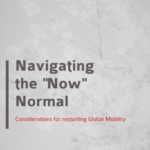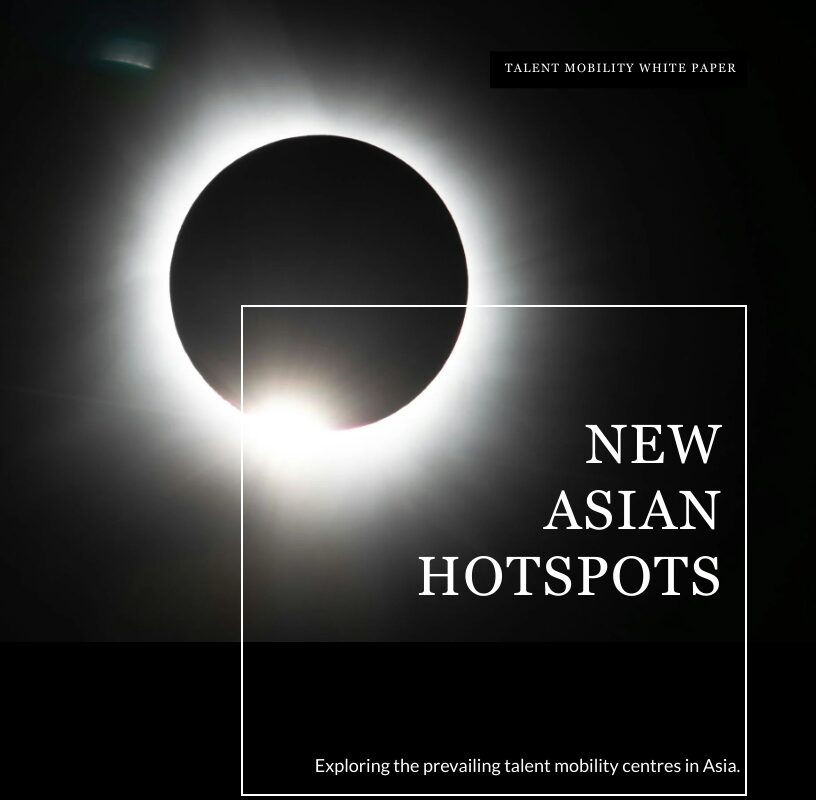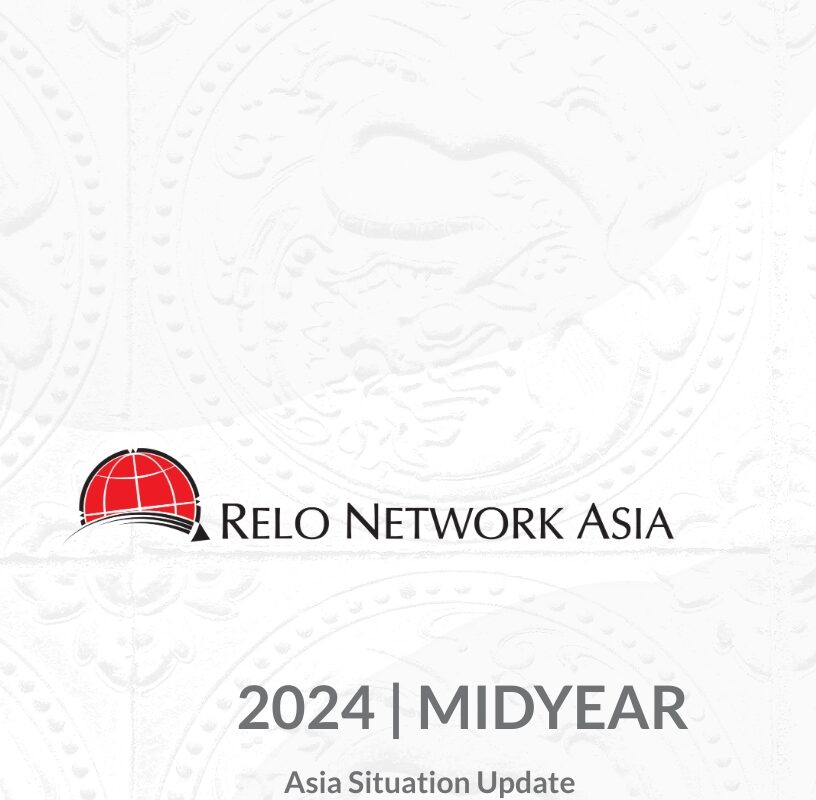From our first Covid-19 alert in January through March’s pandemic proclamation and up until recently, the world and the mobility industry has been in crisis mode.
In what seemed like an overnight timeframe, everything changed. Borders were closed, often without much notice, and employees were left stranded in locations worldwide. Those on assignment could not get home, and those waiting to leave and preparing to go were placed on hold, becoming relocation fossils, frozen in whatever part of the process they were in at the time.
Supply chains have worked double time assisting assignees to coordinate housing, food delivery, and navigate foreign language local requirement announcements. New services have been created to provide safe arrivals to locations under lockdown and when meeting face-to-face is not possible. Every move has been managed on an individual basis, and the focus of everyone involved has been to do whatever necessary to assist assignees and families.
The pace of change has transformed from dramatic to incremental, and we have entered a dichotomy of ongoing alterations while having a broad framework for what comes next. The pandemic continues, but the crises in which it threw global mobility has mostly passed, and we have moved on to the next phase.
Welcome to the “Now Normal.”
This is not the new normal where we will have returned to some semblance of stability to continue with our lives and slowly forget today’s challenges like challenges of the past. This is the interim place between the chaos of crisis and the return to normal.
While the New Normal will be a place where benefit policy and long-term planning are productive exercises, the Now Normal is characterized by constant change and the need for flexibility to address short-lived problems with appropriately temporary solutions. Standing in contradiction, the Now Normal does have some recognized traits. We can generalize based upon experience so far, some cause and effects that will help give shape to the unknowable and will permit a minimum amount of prediction and planning for it.
 We anticipate this interim phase to last at least until a vaccine is developed and widely available. Despite the incredible progress made already, the arrival of global immunization is a moving target. Historically the fastest prequalification for a vaccine occurred in 2019 when the World Health Organization (WHO) prequalified an Ebola vaccine. That process took five years. The Mumps and Measles vaccine was approved in four years. However, that was in the 1960s when regulations were very different from today.
We anticipate this interim phase to last at least until a vaccine is developed and widely available. Despite the incredible progress made already, the arrival of global immunization is a moving target. Historically the fastest prequalification for a vaccine occurred in 2019 when the World Health Organization (WHO) prequalified an Ebola vaccine. That process took five years. The Mumps and Measles vaccine was approved in four years. However, that was in the 1960s when regulations were very different from today.
An oft-quoted timeline for a COVID-19 vaccine availability has been a more hopeful 12 – 18 months from the start of the pandemic, March 2020. More recently, experts estimate a vaccine will not be approved and widely available until the end of Q2 or Q3 2021. Both estimates set the timeline out a year from now in September 2021.
So, for the next 12 months, what will mobility teams need to do to operate efficiently?
Understanding the Setting
First, it is most important to acknowledge the key characteristics of the current challenges posed today. They are reliable only in their unreliability but considering them in the planning process is the best path to mitigating their impact.
- Extended timelines
- Expanded Service Requirements
- Constant and Unpredictable Change
- Disruption to Plans
As we await a return to normalcy, there are also key indicators to monitor, which will be the signs directing us towards what may be the next step forward. Primary to global mobility are barriers to entry into a country. These include borders, immigration, and arrival procedures (quarantine requirements, permission to enter, available quarantine facilities). Barriers to entry rely to a fair degree upon how COVID-19 has been managed. Success in containing the virus is being used as a litmus test for other things.
Countries that manage their infection rates can ease internal movement restrictions and begin to permit cross-border travel with other countries having the same or similar success. The forming travel bubbles and border-crossing exception schemes reasonably exclude infected individuals and sometimes also those countries with high-case counts and low containment success. States with poor public health performance face the challenge of ongoing increasing cases or ongoing stringent containment efforts. They also face exclusion from participation in travel bubbles and other border-crossing exception schemes.
 Global Mobility and HR managers face the difficulty of managing multiple scenarios. These scenarios range from assisting employees still stranded somewhere other than where they need to be, managing new assignments to support ongoing business needs, and managing the on hold assignees who were in various stages of the relocation process when the world metaphorically stopped. During meetings with clients and multiple industry webinars, a common refrain has risen in response to questions regarding when assignments will begin again. Estimations are often placed at Q1 or Q2 of 2021, which from the view of the fourth quarter of 2020, seems a bit optimistic.
Global Mobility and HR managers face the difficulty of managing multiple scenarios. These scenarios range from assisting employees still stranded somewhere other than where they need to be, managing new assignments to support ongoing business needs, and managing the on hold assignees who were in various stages of the relocation process when the world metaphorically stopped. During meetings with clients and multiple industry webinars, a common refrain has risen in response to questions regarding when assignments will begin again. Estimations are often placed at Q1 or Q2 of 2021, which from the view of the fourth quarter of 2020, seems a bit optimistic.
Companies wishing to re-start global mobility program in three months should have a more detailed plan in place today.
When the time arrives to re-start a mobility program, it will not be a case of picking up where people and procedures were left. Different parameters, costs, and procedures will need to be considered for new and existing plans.
Where to begin is a common question. The changes are so pervasive in all aspects of global mobility that the task of tackling it can seem overwhelming. From this perspective, we do not have a 360-degree view of everything our mobility and HR clients are handling, but we can share what we know to be essential considerations. Unfortunately, these considerations will impact managing both the backlog of assignees waiting in the wings and the new assignments the business will require over the coming months. As the pipeline into countries has been reduced and process timelines lengthened, the number of assignments that can be successful may likely be fewer than originally planned.
Over the coming weeks, this series will delve deep into essential considerations for Assignments, New Relocation Timelines and Increasing Relocation Costs.




